

  |
Theodore Berteling
|
 |
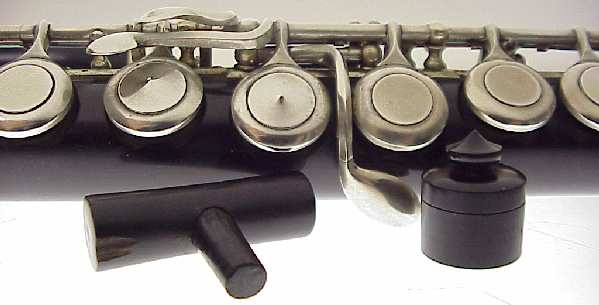
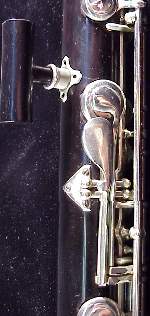 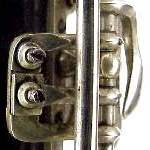 |
Several of Berteling's innovations can
be seen
in the images here.
To the left notice the separate axles for the thumb key and the Briccialdi Bb lever. This is a much more stable and durable arrangement, greatly reducing the "slop" that comes with wear. You can also see where the B-C trill touch connects to the end of the thumb key arm. Above the thumb mechanism is the palm crutch. The previous owner (who also did finish work on Roy Seaman piccolos) removed the crutch receiver, and filled in the holes with tiny Grenadilla dowels. This appears to be the only modification made to the flute, and luckily the hardware and crutch were retained. Berteling moved all clutches for the coupling of the keys to the back side of the flute. The back connector with adjusting screws is at lower left. On the right are the F# clutches to the R2 and R3 kickers. Below is a side view closeup of the R3 kicker in the raised position, showing a cushion embedded in the Grenadilla body to silence the action. In later flutes Berteling inserted a leaf spring between the kicker and the end of the adjusting screw, resulting in less concentrated wear and more stable action. Even without these, this flute has not needed adjustment after several generations of neglect. |
 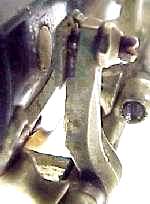 |
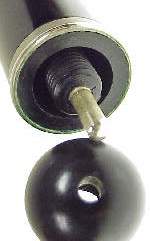 |
The dome crown is female threaded to
mate with
the wooden screw cork adjuster and perforated for the metal pin cork
position
indicator.
Trill key spring arrangement is unique, with the attachment point being an extension of the upper post of the left hand mechanism which also stabelizes the trill rod. Tone holes are countersunk and beveled to a sharp rim at the pad seat. 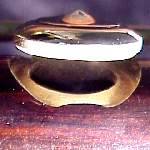 |
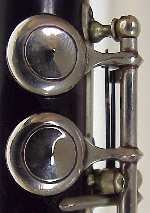 |
 |
This flute has spent most of its life in "suspended animation" in a closet in Arizona. A student brought this, his grandfather's flute, to the attention of his flute teacher, who then acquired it. Although familiar with wooden instruments (being an oboe player and piccolo final assembler), the teacher did not recognize some of the features; and since the flute played well as-is, he made no adjustments. The only alteration was the removal of the palm crutch receiver and filling of the screw holes. For all we know, the pads may even be original! |

Images © J.
W. Sallenger